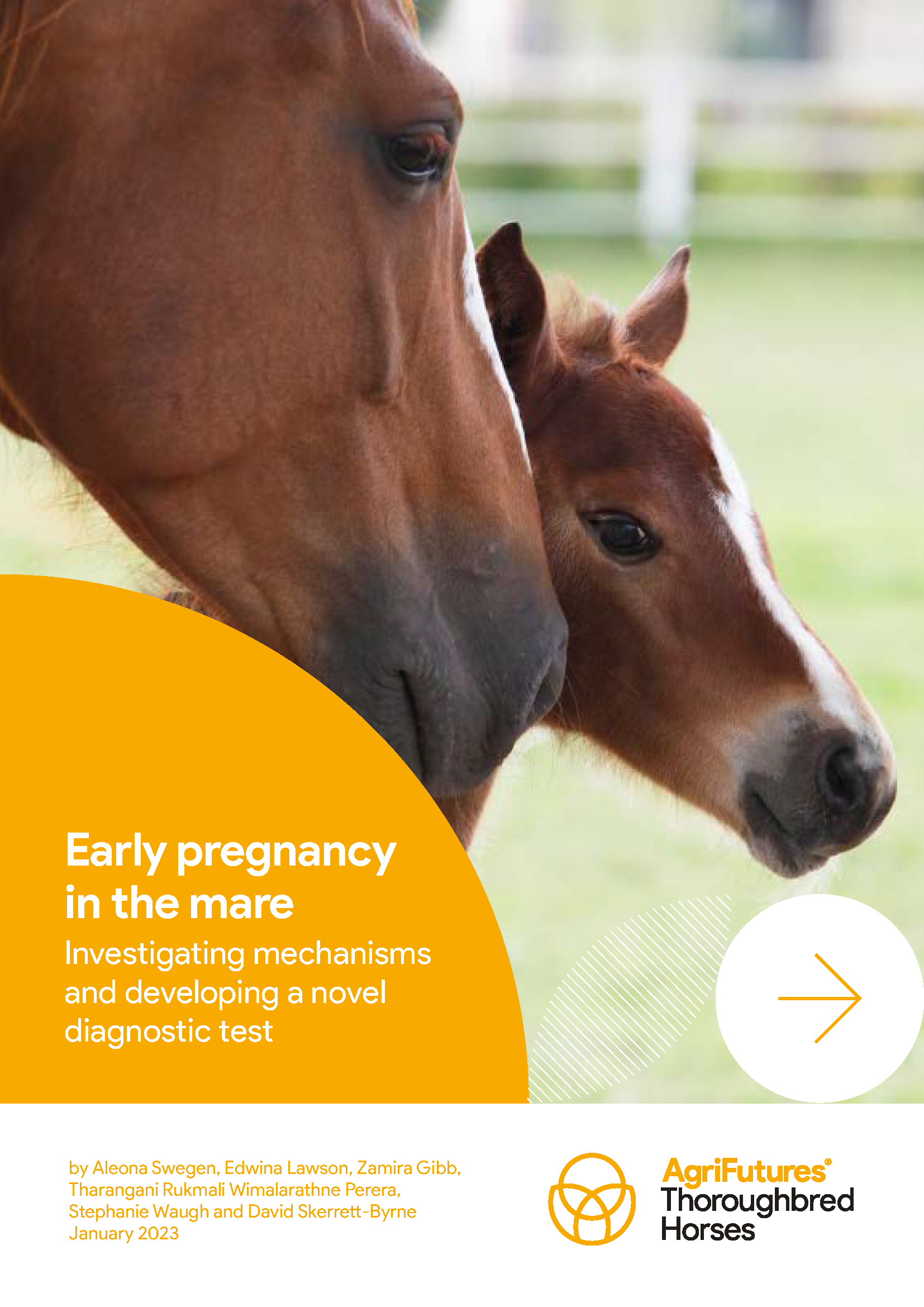Fact sheet: Equine herpes virus
Equine herpes virus (EHV) is a DNA virus found in horses all around the world. There are different strains of EHV, with the most common...
 THOROUGHBRED HORSES
THOROUGHBRED HORSES 
6 pages
Published: 28 Mar 2023
Author(s): Aleona Swegen, Tharangani Rukmali Wimalarathne Perera, Edwina Lawson, Zamira Gibb, Stephanie Waugh, David Skerrett-Byrne
Download report PDF
DownloadThe thoroughbred breeding industry is a vibrant rural sector that delivers $1.16 billion of value to the Australian economy. Breeding relies on natural service, which comes with a unique set of challenges compared with equestrian breeding sectors, which can use artificial insemination and embryo transfer. Previous research has indicated the older the yearling is at the point of sale, the greater the chance the horse has of being successful on the racetrack. Therefore, breeders want to get mares pregnant as early as possible in the breeding season.
Managing constraints around natural service and achieving an early-season pregnancy relies on knowing as soon as possible when the mare is pregnant. Currently, the industry uses transrectal ultrasound to diagnose pregnancy and the earliest this can be achieved is 10-14 days into the pregnancy. Simple and cost-effective ways to detect early pregnancy are essential to improving breeding outcomes.
To ascertain whether early pregnancy and embryo secretions could be identified, this project used cutting-edge high-resolution mass spectrometry techniques to profile blood plasma samples from pregnant and non-pregnant mares, and interactions between the embryo and the mare endometrium. The research identified a unique plasma profile in non-pregnant mares, which points to immune recognition of pregnancy as early as day 7 following ovulation. The research also identified several biomarkers that hold promise for detecting pregnancy using a plasma-based test. Investigations into the embryo found embryo-released factors induce changes in the mare endometrium, and there are pathways of progesterone action that may be playing a role facilitating communication between the embryo and the mare.
This research has paved the way for development of an early pregnancy test at day 7 and provides a base for understanding the interaction between the embryo and the mare. This may lead to strategies being developed that reduce the risk of early pregnancy loss, leading to reduced rebreeding and improved breeding outcomes.